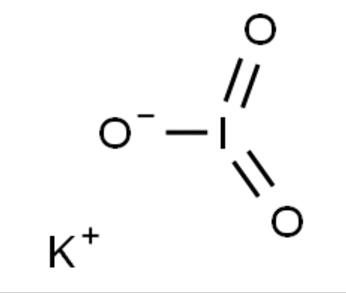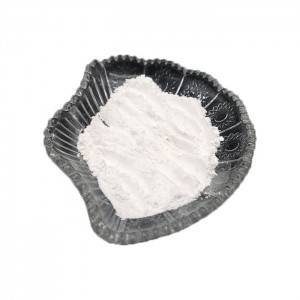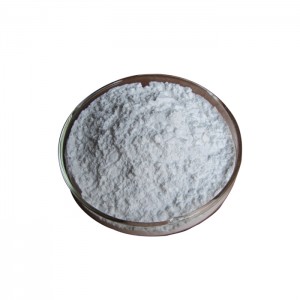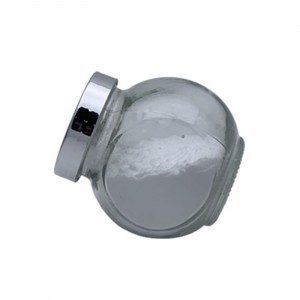Potassium iodate powder for food grade medicine grade reagent grade
Product Description
Product Name: Potassium iodate
Purity: 99.5%;
CAS:7758-05-6
MF: IKO3
MW:214
EINECS:231-831-9
Melting point :560 °
Appearance: White or off-white powder/crystalline solid

Potassium iodate is an iodine-rich salt with the formula KIO3. In hot and humid climates, iodine vapor is hydrolyzed due to the hygroscopicity of potassium iodide. Compared to potassium iodide, potassium iodate is more stable and has a longer shelf life.It is a potent blocker of radioactive iodine uptake by the thyroid gland.
Product Properties
Potassium iodate is colorless monoclinic crystal or white crystalline powder. Odorless. Soluble in water, dilute acid, ethylenediamine, ethanolamine, and potassium iodide aqueous solutions; slightly soluble in liquid sulfur dioxide; insoluble in alcohols and ammonia.
Colorless crystals or white powder; monoclinic structure; density 3.90 g/cm3; stable at ordinary temperatures; melts at 560°C with partial decompo-sition, releasing oxygen; moderately soluble in cold water; 4.74 g/100mL at 0°C; greater solubility in boiling water 32.3 g/100mL at 100°C; soluble in potassium iodide solution; insoluble in alcohol and liquid ammonia.
Application
1) Potassium Iodate is a source of iodine made by reacting iodine with potassium hydroxide. it is a crystalline powder which is more stable than iodide. it has a solubility of 1 g in 15 ml of water. it is used as a fast-acting dough improver; it is used with potassium bromate as an oxidizing agent to modify the protein in bread flour which pro- motes loaf volume and shape. it is used in baked goods.
2) Potassium iodate is a fairly strong oxidizing agent that may be used in the assay of a number of pharmaceutical substances, for instance : benzalkonium chloride, cetrimide, hydralazine hydrochloride, potassium iodide, phenylhydrazine hydrochloride, semicarbazide hydrochloride and the like. Under appropriate experimental parameters the iodate reacts quantitatively with both iodides and iodine. It is, however, interesting to observe here that the iodate titrations may be carried out effectively in the presence of saturated organic acids, alcohol and a host of other organic substances.
The oxidation-reduction methods with potassium iodate invariably based on the formation of iodine monochloride (ICl) in a medium of strong hydrochloric acid solution.
3) Iodine can be added to salt in the form of potassium iodide (KI) or potassium iodate (KIO3). Because KIO3 has higher stability in the presence of salt impurities, humidity, and porous packaging, it is the recommended form.
Potassium iodate, which is formed as a secondary product, is reduced by activated carbon. The product is purified by crystallization from water. Alternatively, iron (II) iodide, prepared by using iron powder and iodine, can be treated with potassium carbonate to obtain potassium iodide. High-purity potassium iodide can be prepared by the reaction of a potassium bicarbonate with hydriodic acid.
Transportation information
UN number: 1479
HazardClass : 5.1
PackingGroup : II
HS CODE: 28299080
Recommend Products
Specification
| Item of analysis | Standard | Result of analysis |
| Description | White or off-white powder/ crystalline solid | Conforms |
| Loss on Drying% | ≤0.5% | 0.03% |
| I(%)≤ | 0.0019% | <0.002% |
| CLO3(%)≤ | 0.01% | <0.01% |
| SO4(%)≤ | Conforms | Conforms |
| Heavy metal (Pb)(%)≤ | <0.001% | <0.001% |
| PH | 5~8 | 6.0 |
| As(%)≤ | ≤0.0003% | <0.0003% |
| Assay | KIO3≥99.0% | 99.5% |









